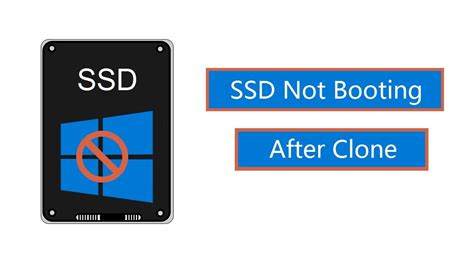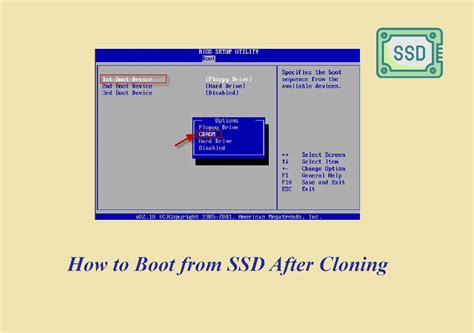cloned ssd does not boot | cannot boot from cloned disk cloned ssd does not boot Clean SSD and redo cloning. Use Macrium Reflect instead. Should be much faster, when not using USB. Note - this is important. After cloning is done - for first boot from cloned drive. Omega kicked off the year 2021 with a bang by elevating the legendary Moonwatch to Master Chronometer. Although this watch is equipped with the latest movement technology, detailed observations in our test find that its exterior remains true to the design of the cult model.
0 · ssd not booting after cloning
1 · make ssd bootable after cloning
2 · make disk bootable after clone
3 · computer won't boot from ssd
4 · cloned hard drive won't boot
5 · cannot boot from cloned disk
6 · aomei cloned disk won't boot
7 · acronis cloned disk not bootable
New Rolex Submariner Watches: Your Official Guide to the 2020 Collection. Well, the rumors were true! There is an entirely new Rolex Submariner collection for 2020, and while the overall aesthetic remains .
ssd not booting after cloning
Clean SSD and redo cloning. Use Macrium Reflect instead. Should be much faster, when not using USB. Note - this is important. After cloning is done - for first boot from cloned drive. hi, quick question - I'm cloning a SATA SSD to a PCIe M.2 NVME SSD (Gen 4). the SATA SSD boots in the new computer no issues. but the M.2 throws up errors & wont .

chanel carteira
It is recommended to put the new drive in the laptop first, and connect the old drive via USB. Otherwise you will may not be able to boot from the new cloned drive, as Acronis True Image will apply a bootability fix to the new disk and adjust the boot settings of the target drive to boot from USB. If the new disk is inside the laptop, the boot . Next, rebuild BCD, type: bcdboot D:\Windows /s Z: /f UEFI. mountvol Z: /D. Next, access your BIOS, change boot priority for the SSD and set the boot mode to UEFI or In some BIOS, disable CSM. then reboot. NOTE: To avoid typing error, just copy and paste the commands to the Admin command prompt windows. Exit Macrium. If your Windows was installed using MBR, Open disk management and make sure the SSD is marked "Active" else go to next step. Shutdown your PC. Disconnect the HD containing Windows C drive then connect your SSD to it. Reboot. Your PC should boot and the Windows should have C as the drive letter.
The computer is booting from the new 4T SSD as you can see on the Disk Manager you posted. C: is the partition with Windows and it is on the 4T SSD. What is Disk 0 (PCIe or M.2)? Install the new 4T SSD on the M.2 Remove the old SSD from the PCIe Enter BIOS and make sure the 4T SSD on the M.2 is the first boot option. Does it boot? System boots, either with the old drive in the m.2 slot or not. Either configuration allows access to all files. With large disk in m.2,, whether or not the small disk is in PCIe, BSOD without capability to go into any of the recovery options. Also, using either disk on PCIe will boot even though BIOS does not recognize either disk .
Use partition master, assign an available drive letter, for example: "S" to the EFI partition on disk 1 (your SSD) then open the Admin command prompt then type: bcdboot F:\windows /s S: /f UEFI. This will rebuild the BCD in disk 1 with correct info to boot Windows from F. Once done, remove the letter. Reboot. On the Acer, open a CMD window as administrator and type: reagentc /disable. diskpart. list disk (it will list all drives. Identify the NVMe drive number) select disk n (replace n by the NVMe drive number obtained with list disk) clean. convert gpt. select part 1. So return the original drive the HDD to the computer - take out the cloned SSD. make the USB WinPE rescue install. Take out the HDD - replace the coned SSD in the same SATA port. Boot from the rescue environment and follow the procedure to repair the boot. The most likely cause is the problem of the boot files.
Forget about the recovery partition, it is no longer needed. After cloning and booting from the new SSD and everything working, run the following command: Code: reagentc /enable. You now will have Windows running on the new SSD, and your recovery environment will be active and will be located at C:\Recovery. The Laptop BIOS can see and IDs both SSDs (one at a time, only one M.2 slot). The Laptop refuses to boot no matter what, goes into repair mode but no repairs are working. For some reason the Laptop goes into repair with both old and new M.2 SSD now. bootrec /RebuildBcd Finds zero installations. bootrec /fixboot says "Access is denied". It is recommended to put the new drive in the laptop first, and connect the old drive via USB. Otherwise you will may not be able to boot from the new cloned drive, as Acronis True Image will apply a bootability fix to the new disk and adjust the boot settings of the target drive to boot from USB. If the new disk is inside the laptop, the boot . Next, rebuild BCD, type: bcdboot D:\Windows /s Z: /f UEFI. mountvol Z: /D. Next, access your BIOS, change boot priority for the SSD and set the boot mode to UEFI or In some BIOS, disable CSM. then reboot. NOTE: To avoid typing error, just copy and paste the commands to the Admin command prompt windows.
Exit Macrium. If your Windows was installed using MBR, Open disk management and make sure the SSD is marked "Active" else go to next step. Shutdown your PC. Disconnect the HD containing Windows C drive then connect your SSD to it. Reboot. Your PC should boot and the Windows should have C as the drive letter. The computer is booting from the new 4T SSD as you can see on the Disk Manager you posted. C: is the partition with Windows and it is on the 4T SSD. What is Disk 0 (PCIe or M.2)? Install the new 4T SSD on the M.2 Remove the old SSD from the PCIe Enter BIOS and make sure the 4T SSD on the M.2 is the first boot option. Does it boot? System boots, either with the old drive in the m.2 slot or not. Either configuration allows access to all files. With large disk in m.2,, whether or not the small disk is in PCIe, BSOD without capability to go into any of the recovery options. Also, using either disk on PCIe will boot even though BIOS does not recognize either disk . Use partition master, assign an available drive letter, for example: "S" to the EFI partition on disk 1 (your SSD) then open the Admin command prompt then type: bcdboot F:\windows /s S: /f UEFI. This will rebuild the BCD in disk 1 with correct info to boot Windows from F. Once done, remove the letter. Reboot.
On the Acer, open a CMD window as administrator and type: reagentc /disable. diskpart. list disk (it will list all drives. Identify the NVMe drive number) select disk n (replace n by the NVMe drive number obtained with list disk) clean. convert gpt. select part 1. So return the original drive the HDD to the computer - take out the cloned SSD. make the USB WinPE rescue install. Take out the HDD - replace the coned SSD in the same SATA port. Boot from the rescue environment and follow the procedure to repair the boot. The most likely cause is the problem of the boot files. Forget about the recovery partition, it is no longer needed. After cloning and booting from the new SSD and everything working, run the following command: Code: reagentc /enable. You now will have Windows running on the new SSD, and your recovery environment will be active and will be located at C:\Recovery.
make ssd bootable after cloning
make disk bootable after clone
chanel bracelts
computer won't boot from ssd

Neben dem Komfortverschluss verfügt die Armbandschließe über ein poliertes .
cloned ssd does not boot|cannot boot from cloned disk


























